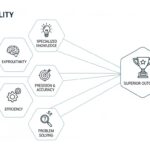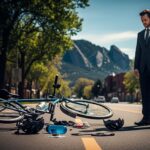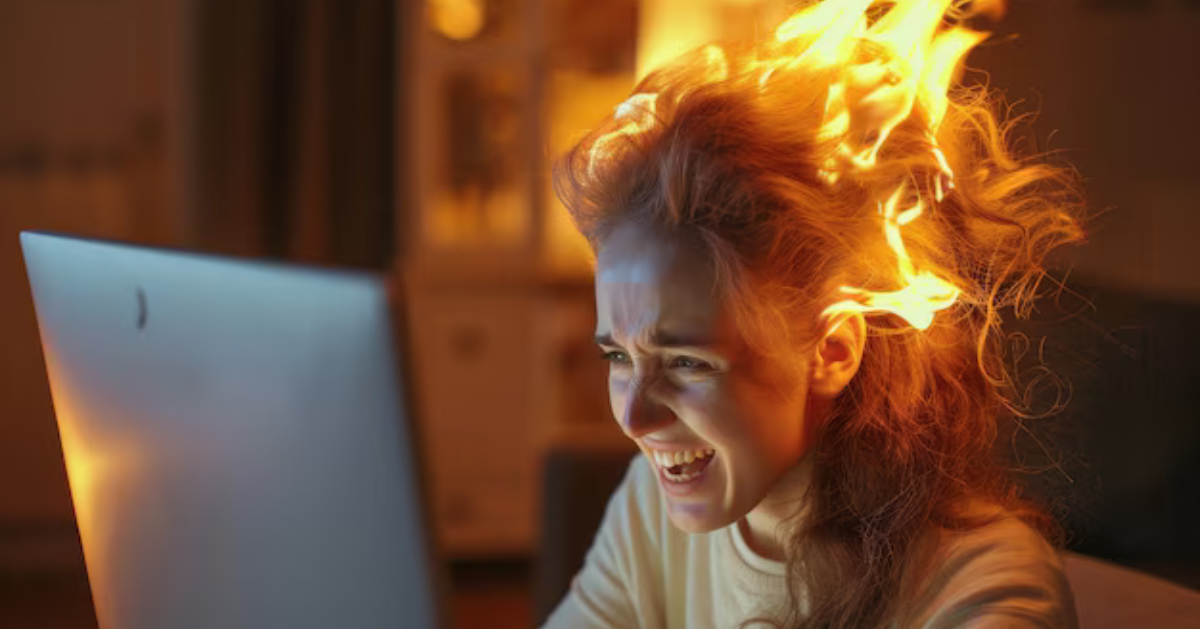A Narrow Passage
Noysky Projects
6727 ⅞ Hollywood Blvd
Los Angeles, CA 90028
Exhibition Dates | Oct 14th – Nov 12th, 2017
Closing Reception | Sunday, Nov 12th, 3-6pm
Noysky Projects is tucked away between souvenir shops in the heart of Hollywood, Los Angeles. As you approach the building, you’re invited to walk down a corridor of shops, a seemingly narrow passage, where you’re met by a quaint water fountain. It’s as if A Narrow Passage was meant to be curated by Noysky Projects. If I’ve learned anything from Elizabeth Gilbert, it’s that the right concepts meet the right people at exactly the right time. The theme of concealment, constriction, and compression invite us to consider the restrictions laid upon each other socially and politically, whether mentally or physically.
You’re immediately immersed in the theme of the show when you arrive, which is the best way to experience art. It May be Time to Rethink the Way You Think by James Gilbert towers over you as you enter the gallery. With the use of wood, wax, rope, and hand dyed canvas – materials commonly utilized to create art, this piece explores the loss of it, whether by natural disaster or systematic oppression, creating the need for protection. This piece is comfortably overwhelming, questioning structure and safety with all its weight. It May be Time to Rethink the Way You Think acts as a barrier that provides comfort, but simultaneously makes you wonder if you should cross it and continue inside.
From Lana Duong’s A Boat Rock, hanging freely but tied at its waist acting as a buoy, that itself needs saving, to Katya Usvitsky’s Connection, which alludes to the body with its stocking weighed down by what look like molecules, to May Wilson’s Untitled (Ground), literally on the ground and easy to miss in its dark and neutral color, as if a person was to curl up into a ball and make itself as small as possible, you can see that they are each waiting to expand – waiting for that moment they will be given permission to breathe.
Jenny Rask’s Clear Baby, created with spandex, tulle, salvaged cord and wool — all of which we wear on our skin in some way, and Megan Mueller’s Ssssss, created with hydro dipped frame and rope, materials that sound like they could be found in the shed in the backyard, make you want to touch your skin to explore whether it’s tightening or shedding, or compressing into a surface of softness or roughness.
Jenalee Harmon’s on or off (documentation is underway) is bright and so very immediate. The person shrouded in red satin hovers over something, and whether they’re ready or not, the photo will be taken. This sculpted-like figure echoes a sense of concealment tied to a world that will keep rotating, no matter what.
Nicolas Shake’s works, as stated by the artist, begins as “theatrical in nature…” and broadly stated, is influenced by the communities in Los Angeles. TPV:EGG.1.2017 triggers the feeling of being bandaged, building with layers upon layers, action upon action, and when the light is just right, you can see it shine through an indentation at the bottom right.
The varying textures next to each other give way to a roller coaster of experiences in one room. The use of material is fascinating, as most of these pieces do not use traditional or commonly used art materials to convey message or feeling. This is a show not to be missed. A Narrow Passage runs through November 12th, with a closing reception on Sunday, November 12th, 3pm – 6pm.
Abrams Claghorn Gallery
1251 Solano Ave, Albany, California 94706
Showing July 5 – August 31, 2017
Recption: Saturday July 15, 5 – 7 pm
Artist Talk: Saturday August 12, 5 – 7pm
Amabelle Aguiluz was featured in our
Spring 2016 issue, where we discussed fiber arts, fashion and meditations of her process. She has joined Venison’s first retrospective with
Veil. We’re delighted to have her speak during the artist talk on August 12th!
Artist Statement + Bio:
Amabelle Aguiluz expresses the flow of life as a vast web of interconnections using the medium of fiber as a symbolic map; linking us to the past and connecting us together. Her preference for using discarded fabrics allows her time to explore the process of transformation while collecting and analyzing the materials of her production. Aguiluz uses her art as a means to connect with history, nature and her surroundings.
Amabelle Aguiluz lives and works in Los Angeles.
Her practice incorporates clothing, textile, fiber sculpture, and installation processes that are presented as free form sculptures and often are incorporated into live performance, video, and photographs. She studied at Politecnico di Milano, Italy and graduated in 2011 from the Fashion Institute of Technology, New York BFA in Fashion Design. Aguiluz’s work has been exhibited nationally and was part of the La Triennale Internationale des Arts Textiles in Outaouais, Canada in 2016
Aliens with Extraordinary Ablities
Curated by Artist, Camella DaEun Kim
Opening Reception | Saturday, May 20th, 5 – 7pm
Exhibition dates | May 20th – July 21st, 2017
Mon – Fri, 10am – 5pm
Immigrant Potluck | Saturday, June 10th
Fellows of Contemporary Art
970 North Broadway #208
Los Angeles, CA 90012
The title of this group show, Aliens with Extraordinary Abilities, is a direct reference to O-1 visa approved by the United States Citizenship and Immigration Services to individuals who are classified as “aliens” possessing extraordinary ability in arts, science, education, business, or athletics, or who has a demonstrated extraordinary achievement in the motion picture or television industries.
Despite having interest to take part in commonly shared discussions on “assimilation versus integration,” “race versus ethnicity,” “mainstream
culture versus subculture,” or “economically motivated immigration versus politically motivated evacuation,” this show is compelled to observe the dialectical process that wages within the outsiders struggling to come to terms with their social environment.
While the eight artists in the show possess distinct backgrounds and manifest disparate approaches to art, each identifies herself as a “stranger,” oscillating between being an insider and an outsider by virtue of her individuality within her own circumstances. Drawing on personal experiences related to diaspora, race, gender, queerness, and social constraints, each artist’s work subverts and confronts the negative connotations of life as a foreigner.
Furthermore, both the curator and artists collaborated by playing both roles. As a whole, Aliens with Extraordinary Abilities amalgamates works ranging from photography, video, sculpture, and sound, site-specific installations. Together, they are collectively curated to touch on the ideas of ‘home’ and expand on the paradigm of the forever immigrant with multiple places of belonging, out of places or with no place to call ‘home’.
Amabelle Aguiluz (textiles and wearable art),
Stephanie Zaletel (choreographer) and
Louis Lopez (original score) recount significant water experiences and encounters in an effort to link our shared psychologies. This highly physical, immersive, and stimulating performance triggers viewers’ collective streams of consciousness and invites us to feel connected to a fleeting and vital resource.
Pulped Fictions at the Torrance Art Museum opened on Saturday, January 14th at 6pm. As soon as you walk in, you’re hit with “Solo Squadron” by Keil Johnson, and with it’s own display of a crash landing, I truly do mean you’ve been hit. It’s animated features add humor to the crash site with elegance that makes you wonder how this sculpture was built. With the participation of about 200 students from the local Orange Coast College, this beauty was built.
Cardboard is an underrated material. It’s lightweight and can absorb both wet and dry mediums. Why aren’t we using it more? It’s accessible and lightweight, making it cost effective and transportation friendly.
Pulped Fictions goes beyond curating a collection of shows that are cool and jaw dropping. This group of artists are creating magnificent, larger than life pieces which remind us of the materials we designate as mediocre and discard quickly.
This is a fun reminder of recycling and reusing.
Torrance Art Museum
3320 Civic Center Drive
Torrance, CA 90503 310-618-6388
Museum Hours
Tuesday – Saturday
11am – 5pm
Blind Spot
(Group show)
Exhibition dates | Dec 10th – Jan 20th, 2017
Design Matters Gallery
11527 W Pico Blvd
Los Angeles, CA 90064
Gallery hours: Mon – Fri 9am – 6pm
Month of Photography Los Angeles
(pop-up group show)
including selected works by Ven artist, Parinya Champ
Exhibition dates | Jan 12th – Feb 12, 2017
Space15twenty
1520 N. Cahuenga Blvd
Los Angeles, CA 90028
Nature Flavored
A group exhibition featuring works by
Amabelle Aguiluz, Amber Mueller and Kalani Ware
Exhibition dates | Jan 14th – Feb 26th, 2017
Opening Reception | Jan 14th, 6- 9pm
Totally Rad Gallery
1212 San Pablo Avenue
Berkeley, CA 94706
Bestiario/Menagerie
Exhibition dates | Jan 7th – 28th, 2017
Closing reception | Jan 28th, 6 – 9pm
Adobe Backroom Gallery
3130 24th Street
San Francisco, CA 94110
All Season Portfolio
Solo show by Patrick Martinez
Exhibition dates | jan 14th – Feb 18th, 2017
Artist Reception | Jan 14th 6 – 9pm
Charlie James Gallery
969 Chung King Road
Los Angeles CA 90012
MUSCLE
Works by Daniel Albrigo and Kinglsey Ifill
Exhibition dates | Jan 14th – Mar 4th, 2017
Opening reception | Jan 14th 6 – 9pm
Paul Loya Gallery
2677 S La Cienega Blvd
Los Angeles CA 90034
The Ecstacy of Mary Shelley
LACE Emerging Curators Program
Exhibition dates | Jan 5th – Feb 12th, 2017
LACE
Los Angeles Contemporary Exhibitions
6522 Hollywood Blvd
Los Angeles CA 90028
Meager Form
Work by Camilla Taylor
@camillataylor
Reception | January 13th, 2017 | 5:30 pm
Penny Contemporary
187 Liverpool Street
Hobart Tasmania, Australia
How often do we get out work done a week or so early? Not often, in my experience. Luckily Camilla completed her works for Meager Form early, and we got to reap the benefits. Here’s a look into my studio visit with her!
Meager Form is comprised of sculptures and collographs that depict the relationship between strength and vulnerability. Camilla, who has been greatly influenced by TS Eliot for this series, spoke with me for about an hour and we discussed everything from art, to neighbors, family and social trends.
Camilla used her own hands as a guide for these sculptures and was able to vary them in size and gesture. They’re beautfully depicted, all the way down to the lines in the palms which are curiously detailed. The weight of hands versus the weight of hair provide a little fight. You only have parts of a body to create an identity, if that’s even what you want to do. Camilla’s works are intentionally left unidentified which leaves ample room for wonder. Whose body could be attached to these hands or feet or braid of hair? It could be yours, mine, your professor’s, maybe your mom from a few years ago or the hand of someone you have yet to meet. It’s pretty magical to think about.
Though these limbs leave room for you to elaborate on, they are also representative of the things we potentially have in common. We’re all ideally born with ten fingers and a set of life lines to get our palms read. The exploration of identity is high right now, which makes Camilla’s works stand out even more. There is no eye color, shape, finger nail, or skin color to point out and run with.
Alternatively, there’s is much security to be found in There is space all around you. Wrapped in itself, these feet are kept warm, cozy and safe. It’s like creating a personal bubble; there’s space for yourself provided by yourself, which immeditely led me to the idea of the imporance of self care.
We can have our heads in the clouds, just as long as our feet are on the ground – isn’t that how it goes? Camilla’s works trigger a number of varying thoughts to tinker with.
Reminicent of etchings, the prints below were made through the process of collography. The images are carved onto board, covered in ink and transfered onto paper. This was my first experience with it. Of course, I asked her if she ever considered incorporating color (I bet she’s gotten that one too many times.) I realized that it’s unnecessary because the texture created with this technique is so deep, that they are extremely vibrant as is.
Meager Form ships off to Penny Contemporary this week. If you have the chance, I recommend saying hello to Camilla and checking out the work personally!
PS, Camilla has a new system of screen printing and it’s with watercolor. Check out the following piece, along with many others in
With Liberty and Justice for Some at
Walter Maciel Gallery Los Angeles, starting January 7th, 2017.
Blind Spot
Opening Reception | Saturday, December 10, 2–6pm
Opening night performance | Armando Cortes at 3:30pm
Exhibition Dates| Dec 10th to Jan 20th, 2017
Design Matters Gallery
11527 W Pico Blvd, Los Angeles, CA 90064
Mon – Fri 9am – 6pm
Featured Artists: Shiva Aliabadi, Jeremy Bailey, Armando Cortes, Matthias Dörfelt, Aaron Giesel, Kang Seung Lee, Lauren McCarthy, Patch Wright
BLIND SPOT is a group show curated by Camella D. Kim presenting eight artists, each working in a distinctive art-making process and sharing a common theme: a ‘blind spot.’ It takes place at Design Matters Gallery in Los Angeles, from December 10th, 2016 to January 21st, 2017.
In the human body, a blind spot refers to an area of the retina where there are no photoreceptors, resulting in an obscuration gap in the visual field. More commonly, a blind spot refers to a small area outside of a vehicle that drivers cannot see. In order to see what is in a blind spot, one must make a small shift in the way they look, alternating his/her/their positioning or gaze to glimpse what is hidden in a blind spot. It does not mean that what we cannot see does not exist. With this in mind, the show title references a broader, metaphorical notion of the phrase, highlighting that portion of the mind that houses hidden biases–: for the artists in their art practice, decision-making and creative process.
Every artist has a bias about their work and the work of others; in being true to their art-making processes, artists cannot disguise their tastes and aesthetics. In choosing subject matter, materials, and the format by which an artist expresses an idea, image, emotion, or concept, the artist is also expressing their preferences, or, the particular perspective from which these choices are made. Moreover, the notion of a blind spot is also relevant from the viewer’s perspective, as they are unlikely to be informed or exposed to the artists’ processes.
This bias is not an inherently negative quality. In fact, it is often what motivates artists, causing them to delve deeper into their interests and discover different approaches. Shiva Aliabadi’s Safety of Objects (2016) candidly reveal through the use of obscure objects against the readily familiar to highlight a blind spot. Circumferencing Circle (2015) by Patch Wright reveals hidden space and ‘visible’ space through spatial play offering deeper insight into the meaning of privacy or lack thereof. Works like Aaron Giesel’s photography series and Kang Seung Lee’s artist book, Covers (2015), divulge the ideas often culled from their studio practices.
Bridging those works are performance and custom software-based pieces by Jeremy Bailey, Armando Cortes, Matthias Dörfelt, and Lauren McCarthy that intentionally and, or inherently embody the invisible or hidden aspects of the art-making– which are ultimately revealed in the final execution of their work. As a whole, BLIND SPOT amalgamates works ranging from ceramics, photography, sculptures, interactive installation, prints, and custom software that expand the definition of the blind spot, exploiting via art-making, the ambivalent blind spot of the human experience.










